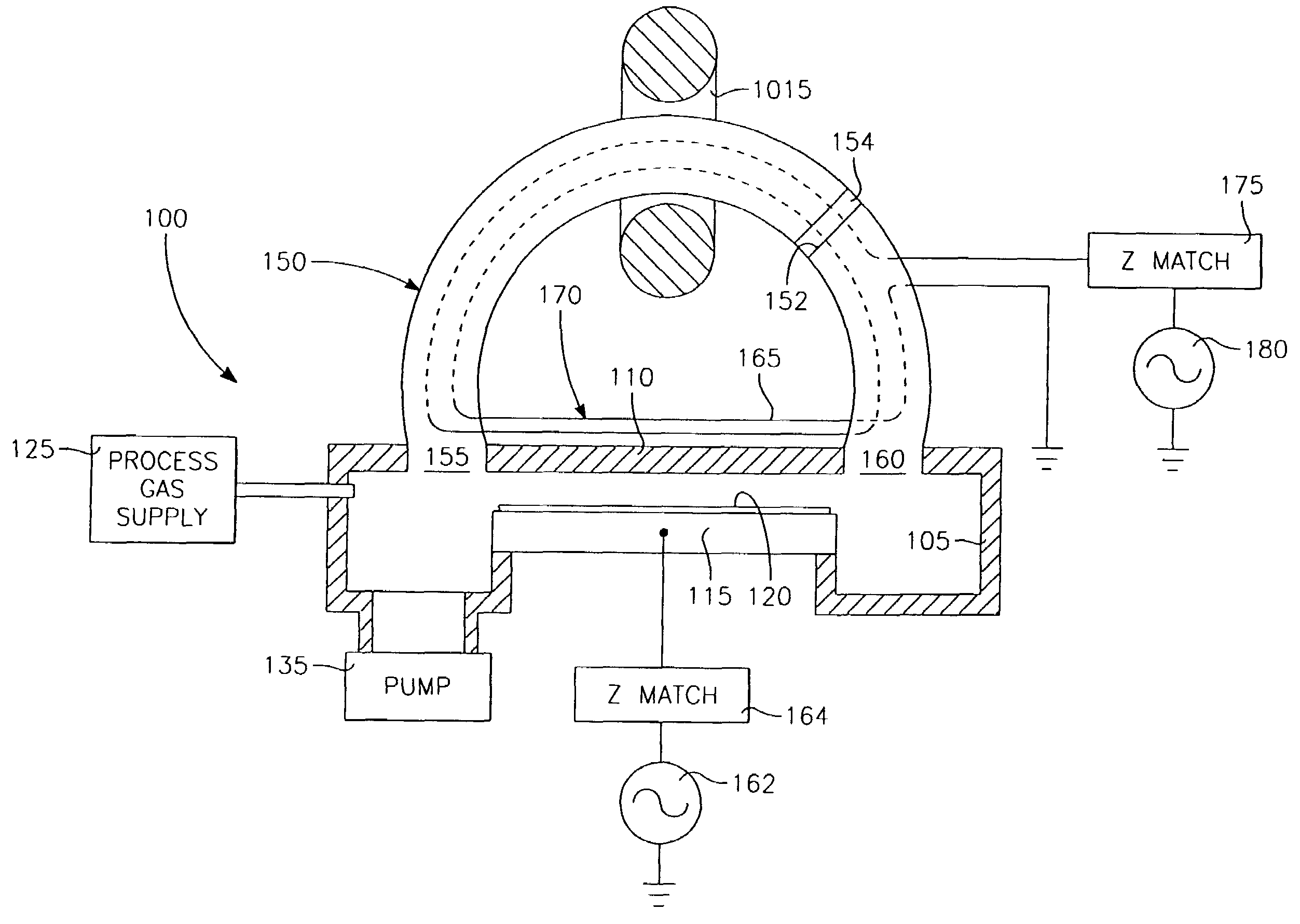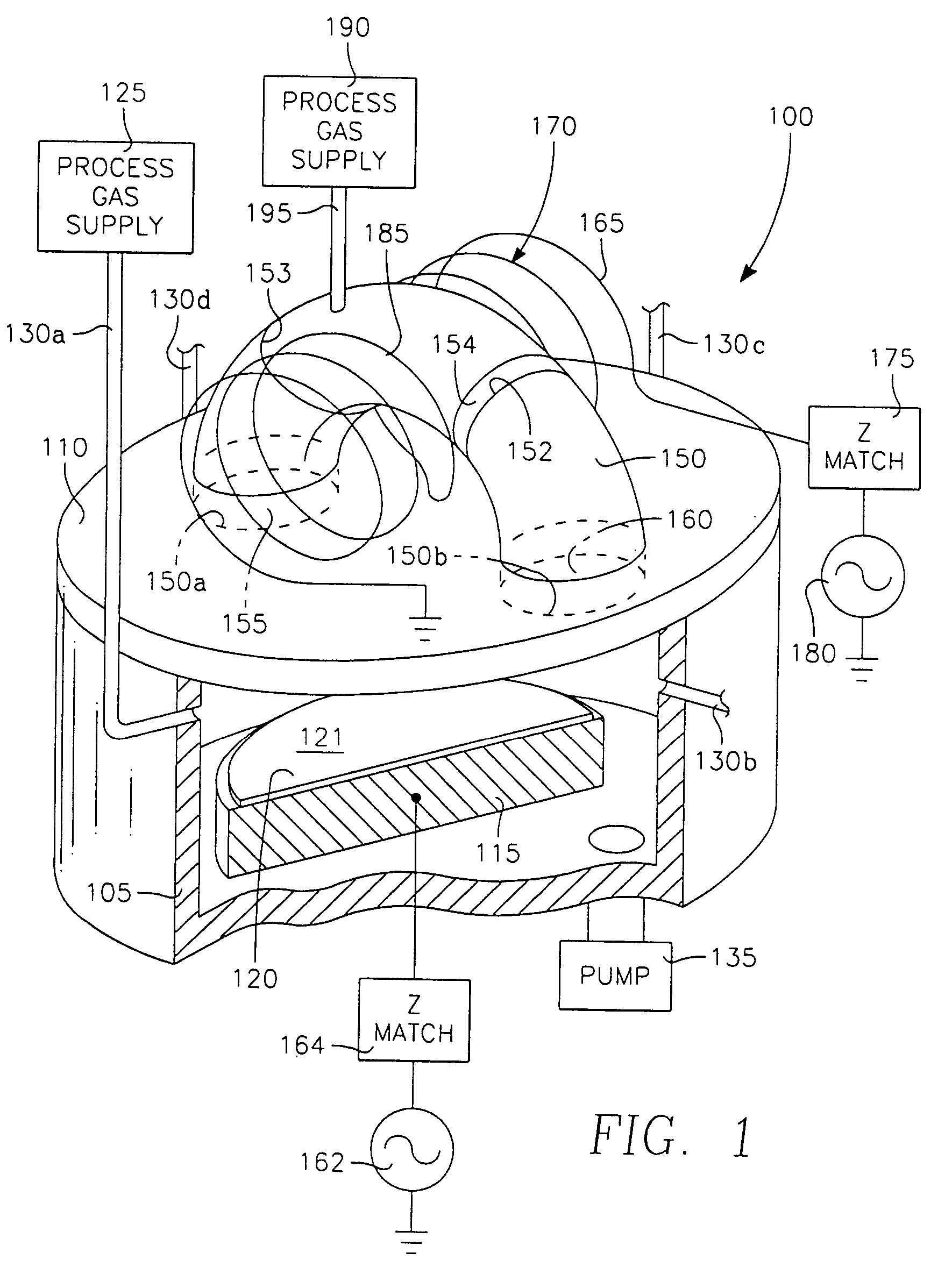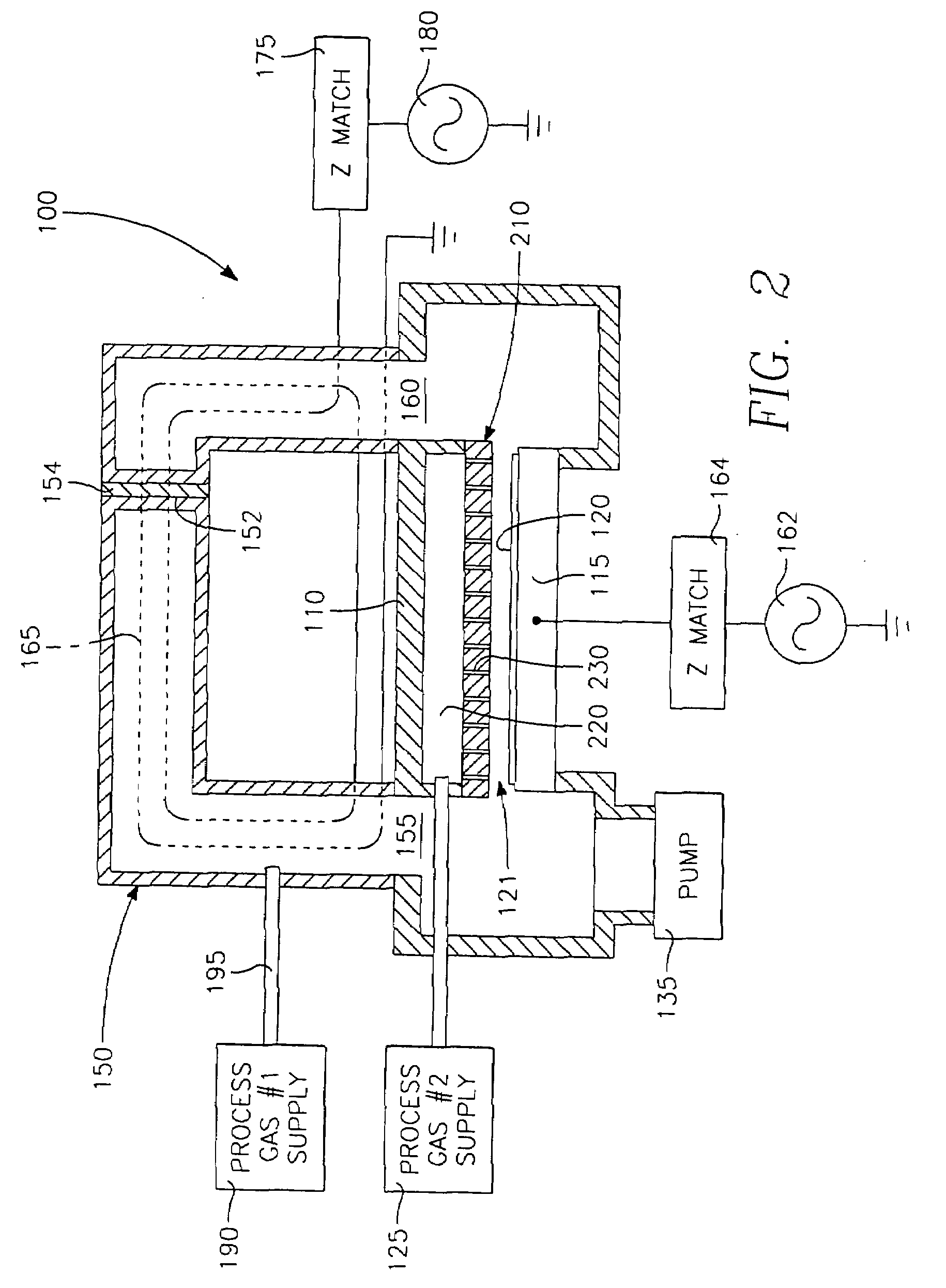Very low temperature CVD process with independently variable conformality, stress and composition of the CVD layer
a cvd layer, very low temperature technology, applied in vacuum evaporation coating, mechanical equipment, rod connections, etc., can solve the problems of only achieving the required cvd reaction energy, pecvd process may not be unsuitable for certain cvd processes, and not being able to fabricate 65 nanometer devices
- Summary
- Abstract
- Description
- Claims
- Application Information
AI Technical Summary
Benefits of technology
Problems solved by technology
Method used
Image
Examples
working examples
[0319]A principal application of a PIII reactor is the formation of PN junctions in semiconductor crystals. FIGS. 109 and 110 illustrate different stages in the deposition of dopant impurities in the fabrication of a P-channel metal oxide semiconductor field effect transistor (MOSFET). Referring first to FIG. 109, a region 9960 of a semiconductor (e.g., silicon) wafer may be doped with an N-type conductivity impurity, such as arsenic or phosphorus, the region 9960 being labeled “n” in the drawing of FIG. 109 to denote its conductivity type. A very thin silicon dioxide layer 9962 is deposited on the surface of the wafer including over n-type region 9960. A polycrystalline silicon gate 9964 is formed over the thin oxide layer 9962 from a blanket polysilicon layer that has been doped with boron in the PIII reactor. After formation of the gate 9964, p-type dopant is implanted in the PIII reactor to form source and drain extensions 9972 and 9973. Spacer layers 9966 of a dielectric materi...
PUM
 Login to View More
Login to View More Abstract
Description
Claims
Application Information
 Login to View More
Login to View More - R&D
- Intellectual Property
- Life Sciences
- Materials
- Tech Scout
- Unparalleled Data Quality
- Higher Quality Content
- 60% Fewer Hallucinations
Browse by: Latest US Patents, China's latest patents, Technical Efficacy Thesaurus, Application Domain, Technology Topic, Popular Technical Reports.
© 2025 PatSnap. All rights reserved.Legal|Privacy policy|Modern Slavery Act Transparency Statement|Sitemap|About US| Contact US: help@patsnap.com



